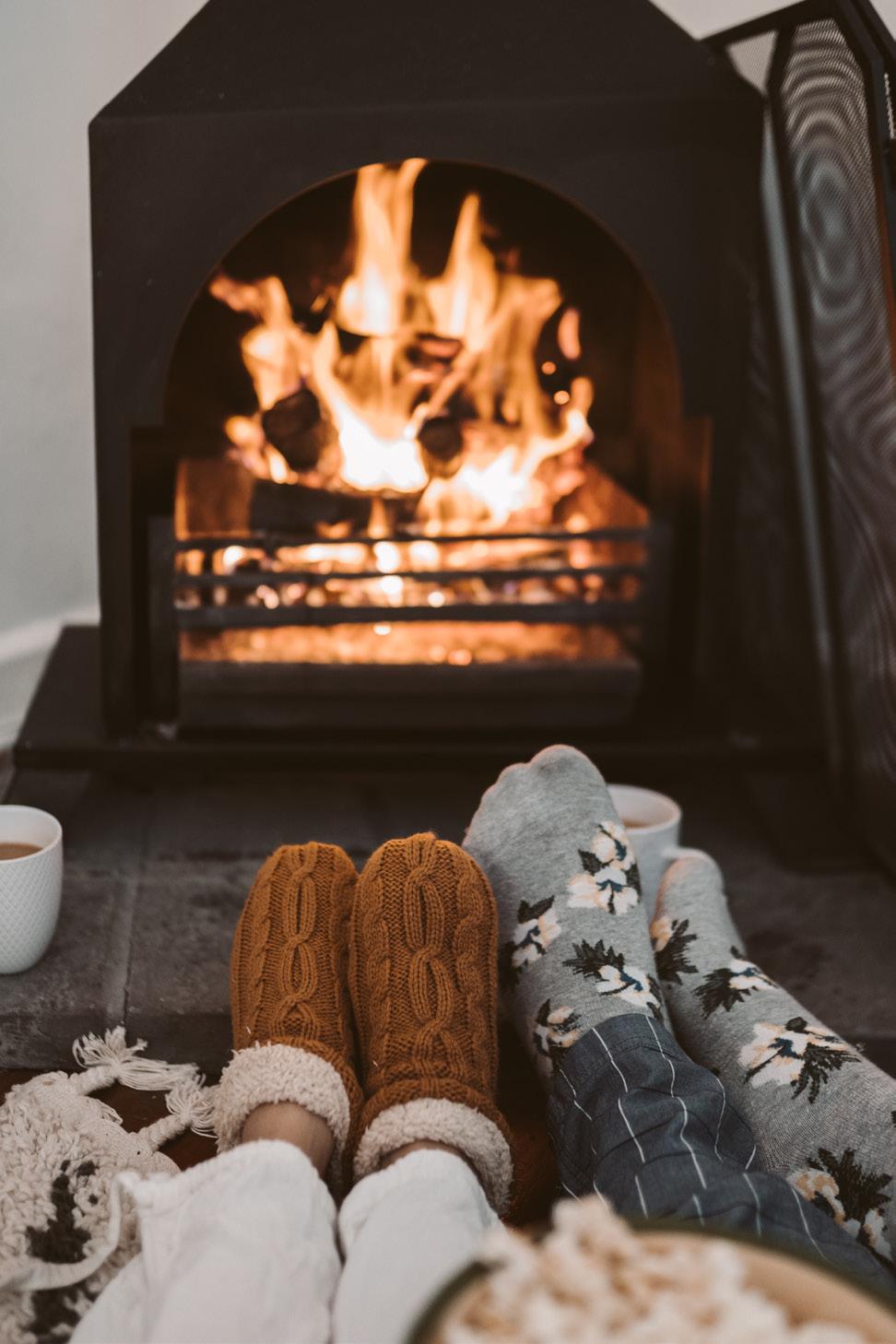
4 minute read
Know your wood
A CHIMNEY SWEEP’S GUIDE TO THE DO'S AND DON’TS OF BURNING WOOD
Did you know that some wood burns quicker than others? Or that your logs should have a moisture level of less than 20%?
Advertisement
Here experienced sweep, Richard Bryan at Wilkins Chimney Sweep gives us his sweep’s guide to best burning practices.
So, let’s start with the ‘baddies’, what you absolutely shouldn’t burn on your open fire or in your wood-burning stove.
Firstly, avoid any kind of fir tree e.g. pine or leylandii. Secondly, don’t be tempted to burn scrap wood i.e. old fence panels, pallets, etc.; these are likely to have been treated with wood preserver when they were made, which can give off harmful fumes when burnt in any kind of volume. Firewood, even when dry, retains large amounts of sap and it’s this sap that can then turns into creosote (tar) when burnt, which builds up on the inside of your chimney and can easily ignite causing the dreaded chimney fire. Also beware of burning, chipboard or MDF. These have been made using resin which produces toxic gasses when burnt, which are harmful to the environment.
BAD WOOD: Pine. Leylandii. Scrap wood. Pallets. Fir. Fence panels. Chipboard. MDF.
So that’s the ‘no’s’ taken care of, now to find out what you should be burning and why.
The very best wood to burn is a well-seasoned hardwood log. Seasoned logs have been stored in a reasonably dry environment for 6-12 months before burning. Types of hardwood include ash, beech, oak, and birch; most fruit tree wood burns well too
But which wood burns best?
For a regular roaring fire, you should look for ash or beech logs. These two species have a more ‘open’ grain meaning they will burn well. Ash is the best ‘all-rounder’, burning well with little smoke. Birch has an ‘open’ grain so will burn very quickly meaning your log pile will diminish fast as you feed your hungry fire. Oak, on the other hand, has a much ‘tighter’ grain and will burn slower, saving trips to the log pile and pounds in your purse. Oak, however, should be seasoned for 12 to 24 months before burning.
GOOD WOOD: Hard woods such as ash, beech, oak, birch.
I’ve heard my logs have to be ‘dry’ before I burn them, is this true?
Absolutely; burning wet logs is one of the major factors contributing to chimney fires, so it’s vital your wood is properly dried out. If you burn wet logs, they cause a build-up of flammable creosote/tar on the inside of your chimney which could ignite at any time. Serious stuff.
So, how do I store my logs?
Firstly, we recommend that hardwood trees should have been cut down and logged (cut into logs) and then kept in dry conditions to the season for a minimum of six months, longer if felled in Autumn or Winter. Check with your log supplier and make sure you only buy well dried (seasoned) logs.
Once you’ve got them to your house if you’re keeping them in the garden they should be covered with a waterproof covering (tarpaulin etc) and stacked so that air can circulate around them. Storing them off the ground, on old pallets or similar, will enable the ones at the bottom of the pile to remain dry.
I’m worried my logs aren’t properly ‘dry’. How do I find out if they are and how do I resolve it if they’re ‘wet’?
For safe burning, logs should have a moisture level of less than 20%; if you have one, a moisture meter is an accurate way to measure this.
If you don’t have a moisture meter, and let’s be honest most of us don’t, simply bring the logs inside and dry them out in a warm room, or around the fire for a few days before use. This will ensure they are as dry as possible. BUT – don’t store them too close to an open fire or wood burner – they are flammable!
So, if I’m making sure my logs are nice and dry presumably, I don’t need to have my chimney swept so often?
No! We generally recommend that you have your chimney swept mid-season and at the end of the burning season if your fire or wood burner is used regularly throughout the winter (i.e. 4 or more times per week) but this really depends on what is being burnt. This also applies if coal is being burnt on open fires or multi-fuel stoves. However, as a minimum, you should have your chimney swept annually as a precaution.
If you would like more information to help you get the most from your fire and fuel, you can visit the Burnright campaign site: www.burnright.co.uk.
Getting it right will save you money, make you safer and significantly reduce unnecessary air pollution.









